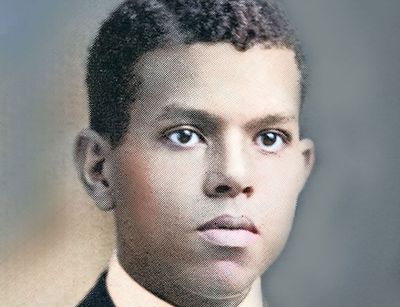Meet David Crosthwait, Alice H. Parker, and Lewis Latimer!
The home’s heating and cooling system didn’t come out of thin air. It needed inventors’ and engineers’ insight. But who were some of those important innovators?
This Black History Month, interested readers can meet three icons that are truly some of America’s “hidden figures.” These inventors helped revolutionize the heating and cooling industry, with an impact still felt today. Get ready to meet:
David Crosthwait
 According to the National Inventors Hall of Fame, David Crosthwait was born in 1898. Although slavery had ended in 1865, it was rare for African-Americans to attend college––much less get jobs in engineering. But that didn’t stop Crosthwait.
According to the National Inventors Hall of Fame, David Crosthwait was born in 1898. Although slavery had ended in 1865, it was rare for African-Americans to attend college––much less get jobs in engineering. But that didn’t stop Crosthwait.
He got his bachelor’s and master’s at Purdue University, finishing his schooling in 1920. Shortly after, Crosthwait got to work inventing. He was extremely active throughout the 1920s and 1930s, focusing primarily on building HVAC systems. He created a vacuum pump, energy-efficient thermostats, and boilers.
At the time of Crosthwait’s death in 1976, he held 35 U.S. patents and 80 international patents. His inventions are responsible for heating and cooling notable New York City venues, including Radio City Music Hall and Rockefeller Center in New York City.
Alice H. Parker
Not a lot is known about Alice H. Parker’s life. In fact, historians aren’t even sure when she passed away. Some suspect that she died in the 1920s in a fire, although this hasn’t been officially confirmed. It seems that after 1919, Parker disappeared from the history books.
But here’s what experts do know. BlackPast notes that Parker was born in 1895. It’s said that the cold, brutal winters in New Jersey inspired her to experiment with gas furnaces and ductwork. She attended high school through an offshoot of Howard University, where she graduated with honors.
Then, in 1919, Parker filed a patent for a heating system invention. It drew cool air into the furnace, then went through a heat exchanger that blew warm air throughout the home. Although Parker’s original inventions were never used commercially, future inventors relied on her blueprints for guidance. Her findings allowed engineers to design heating and cooling systems that reduced the likelihood of serious fires. While nobody knows much about Parker’s life after she filed her patent, her innovation lives on, keeping homes warm to this day.
Lewis Latimer
 Lewis Latimer lived for 80 years––and during that time, he certainly made his mark on the scientific world. He was born in 1848 to enslaved people who ran away, and his early life was very rocky, as his parents feared capture. As a teenager, he joined the U.S. Navy and served for nearly two years.
Lewis Latimer lived for 80 years––and during that time, he certainly made his mark on the scientific world. He was born in 1848 to enslaved people who ran away, and his early life was very rocky, as his parents feared capture. As a teenager, he joined the U.S. Navy and served for nearly two years.
Once he left the Navy, he worked at a patent firm. There, he discovered his passion for engineering and, soon after, started inventing. One of his most significant achievements was improving how lightbulbs were manufactured. His findings made carbon filament harder to break. He also worked alongside some big-name inventors, including Thomas Edison and Alexander Graham Bell.
Another patented invention of Latimers was a forerunner of the air conditioner. His evaporative air conditioner was unique at the time because, besides cooling, it also helped improve indoor air quality by disinfecting the air like more modern air conditioners. Latimer passed away in 1928, and today, history buffs can visit his home in Flushing, Queens, NY.
About Elite Electric, Plumbing & Air
With more than 30 years of experience, Elite Electric, Plumbing & Air is who to call when homeowners want work done right the first time. They offer 24/7 emergency service, upfront pricing, and on-time arrival. Call them today for indoor air quality, AC, or heating services in Jupiter, FL.










